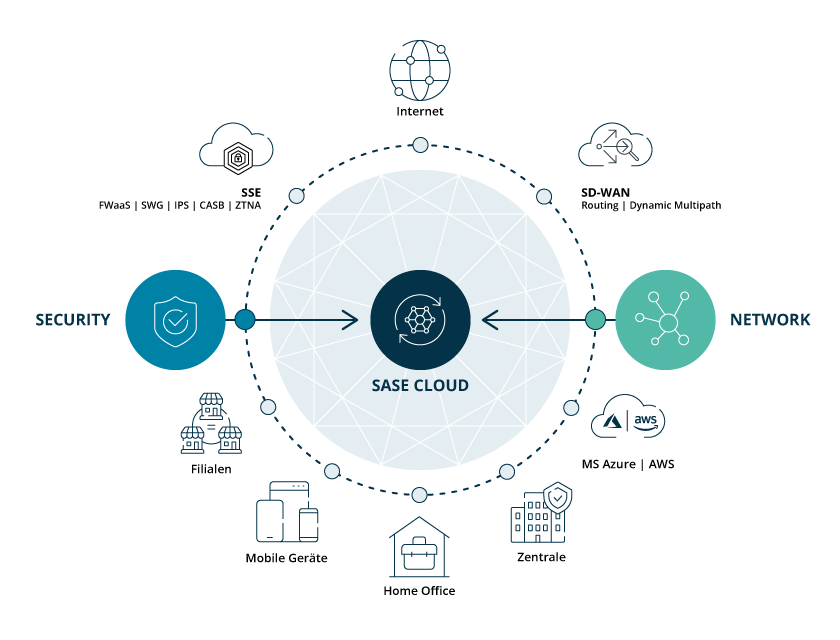
According to an analysis by Gartner, the SASE market is expected to grow by around 30% per year over the next three years. The reasons cited are the trend towards secure working “from everywhere”, customers’ desire for solutions that cover multiple functions and the converging development of the SD-WAN and SSE market towards similar offerings. So it’s high time to take a closer look at this technology.
What is SASE?
SASE stands for Secure Access Service Edge. It is a network architecture that combines network security features with wide area network (WAN) capabilities to support the dynamic and secure access requirements of organisations. The main goal of SASE is to provide secure and optimised access to network resources and applications for users, regardless of their location, while reducing the complexity and cost of traditional network and security architectures.
A SASE architecture combines various network and security services, including SD-WAN (Software-Defined Wide Area Network), Secure Webgateways (SWG), Firewall as a Service (FWaaS), Cloud Access Security Broker (CASB) and Zero Trust Network Access (ZTNA) in a single cloud-based service model.
The aim of SASE solutions is to ensure secure connectivity while reducing complexity.

WHAT ARE THE ADVANTAGES OF SASE SOLUTIONS?
Reduced complexity:
Combining several security functions, which traditionally requires the use of a number of individual products from different manufacturers, into a single integrated cloud-based solution often massively reduces complexity. This can certainly be reflected in noticeably reduced operating costs. The only fly in the ointment may be the sometimes necessary simplification of certain security concepts – overly complex combinations of different sets of rules may no longer be possible. However, this can just as easily be seen as an advantage.
Increased security:
With the increasing use of cloud services and the growing number of remote employees, the attack surface for cyber threats has grown. SASE offers a comprehensive security solution that is designed to support and secure these scenarios. This protects information and applications from threats such as malware, data leaks and unauthorised access, while also securing remote access to company resources with functions such as ZTNA.
Better performance:
Traditional network architectures can become overloaded by increasing data traffic and the use of cloud services. SASE optimises network performance through the use of SD-WAN and the provision of security functions at the edge.
EVALUATION OF SASE SOLUTIONS
When evaluating suitable SASE solutions, a number of points should be taken into account. The following list contains the most important points and can serve as a guide:
- Integration: Integration into the existing system landscape should be as simple as possible. Examples of this include integration with existing identity and access management (IAM) solutions or logging and monitoring tools (including SIEM).
- Scalability: The solution must offer the required performance for the planned use and be able to grow in line with the company’s growing requirements. Even if these solutions are usually cloud-native, it’s worth asking specific questions, especially for larger companies with a lot of remote access.
- User-friendliness: Potential efficiency gains from reducing several security products to one solution should not be cancelled out by unnecessarily complex administration interfaces.
- Security functions: SASE products sometimes differ markedly in the range of security features offered. Companies should make sure that the functions they require are included in the desired product and cover the corresponding requirements.
SUMMARY
SASE solutions definitely have the potential to partially replace traditional network security solutions in the coming years. However, as this is by no means a market with largely standardised offerings, a careful evaluation is worthwhile


